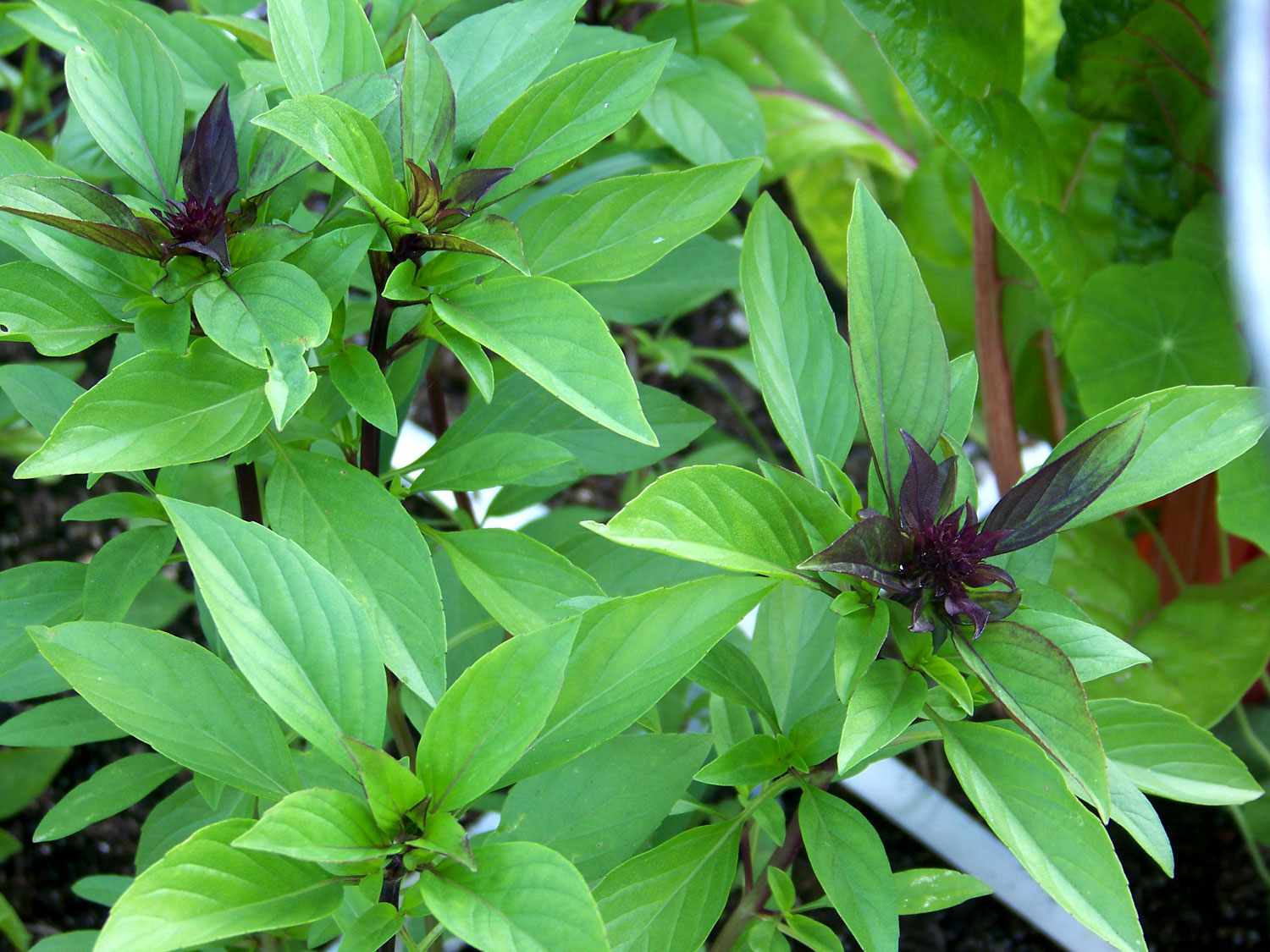
What makes Thai basil unique? Thai basil stands out with its distinct flavor profile, combining sweet, spicy, and anise-like notes. Unlike regular basil, its leaves are smaller, more pointed, and have a purple hue. This herb thrives in warm climates and is a staple in Southeast Asian cuisine, especially Thai dishes. Its resilience to heat makes it perfect for stir-fries and soups, where it retains its flavor even when cooked. Rich in antioxidants, Thai basil not only enhances dishes but also offers health benefits. Whether you're a culinary enthusiast or a home cook, incorporating Thai basil can elevate your meals to new heights.
Key Takeaways:
- Thai basil, with its spicy, licorice-like flavor, originates from Southeast Asia and is rich in antioxidants, vitamins, and anti-inflammatory properties, making it a valuable addition to your diet.
- Growing Thai basil at home is easy and rewarding, requiring full sunlight, well-drained soil, regular watering, and pest control. It holds cultural significance in religious ceremonies, traditional medicine, and festivals.
What is Thai Basil?
Thai basil is a popular herb in Southeast Asian cuisine, known for its unique flavor and aroma. Unlike sweet basil, it has a spicy, anise-like taste that adds depth to many dishes. Here are some fascinating facts about this versatile herb.
-
Origin: Thai basil originates from Southeast Asia, particularly Thailand, Vietnam, Cambodia, and Laos.
-
Varieties: There are several varieties of Thai basil, including 'Queen of Siam,' 'Lemon,' and 'Cinnamon' basil.
-
Appearance: It has narrow, pointed leaves with purple stems and flowers, making it visually distinct from other basil types.
-
Flavor Profile: The herb has a sweet, licorice-like flavor with hints of anise and clove.
-
Culinary Uses: Thai basil is commonly used in dishes like pho, pad kra pao, and green curry.
Nutritional Benefits of Thai Basil
Thai basil is not only flavorful but also packed with nutrients. It offers several health benefits that make it a valuable addition to your diet.
-
Rich in Antioxidants: Thai basil contains antioxidants that help fight free radicals in the body.
-
Vitamin A: It is a good source of vitamin A, which is essential for eye health.
-
Vitamin K: The herb provides vitamin K, important for blood clotting and bone health.
-
Anti-inflammatory Properties: Compounds in Thai basil can help reduce inflammation.
-
Digestive Aid: It aids digestion and can help alleviate stomach issues.
Growing Thai Basil at Home
Growing Thai basil at home is relatively easy and rewarding. Here are some tips and facts to help you get started.
-
Sunlight: Thai basil thrives in full sunlight, requiring at least six hours of direct light daily.
-
Soil: It prefers well-drained soil with a pH between 6.0 and 7.5.
-
Watering: The herb needs regular watering but avoid overwatering to prevent root rot.
-
Harvesting: Harvest leaves regularly to encourage new growth and prevent the plant from flowering too soon.
-
Pests: Common pests include aphids and spider mites, which can be controlled with natural remedies.
Cultural Significance of Thai Basil
Thai basil holds cultural importance in various Southeast Asian traditions and cuisines. Its use goes beyond just flavoring dishes.
-
Religious Ceremonies: In some cultures, Thai basil is used in religious ceremonies and rituals.
-
Traditional Medicine: It has been used in traditional medicine for its healing properties.
-
Symbolism: The herb symbolizes love and protection in certain cultures.
-
Festivals: Thai basil is often featured in food festivals celebrating local cuisine.
-
Culinary Heritage: It plays a crucial role in preserving the culinary heritage of Southeast Asia.
Thai Basil's Unique Charm
Thai basil isn't just a pretty plant. Its distinct flavor and aromatic qualities make it a standout in kitchens worldwide. Whether you're whipping up a spicy curry or garnishing a fresh salad, this herb adds a special touch. Plus, it's packed with health benefits like antioxidants and anti-inflammatory properties.
Growing Thai basil at home? Easy peasy. It thrives in warm, sunny spots and needs regular watering. Just snip off what you need, and it'll keep producing.
So next time you're at the market, grab some Thai basil. Experiment with it in your dishes. You'll be surprised at how much it can elevate your cooking. And who knows? You might just find a new favorite herb.
Frequently Asked Questions
Was this page helpful?
Our commitment to delivering trustworthy and engaging content is at the heart of what we do. Each fact on our site is contributed by real users like you, bringing a wealth of diverse insights and information. To ensure the highest standards of accuracy and reliability, our dedicated editors meticulously review each submission. This process guarantees that the facts we share are not only fascinating but also credible. Trust in our commitment to quality and authenticity as you explore and learn with us.


